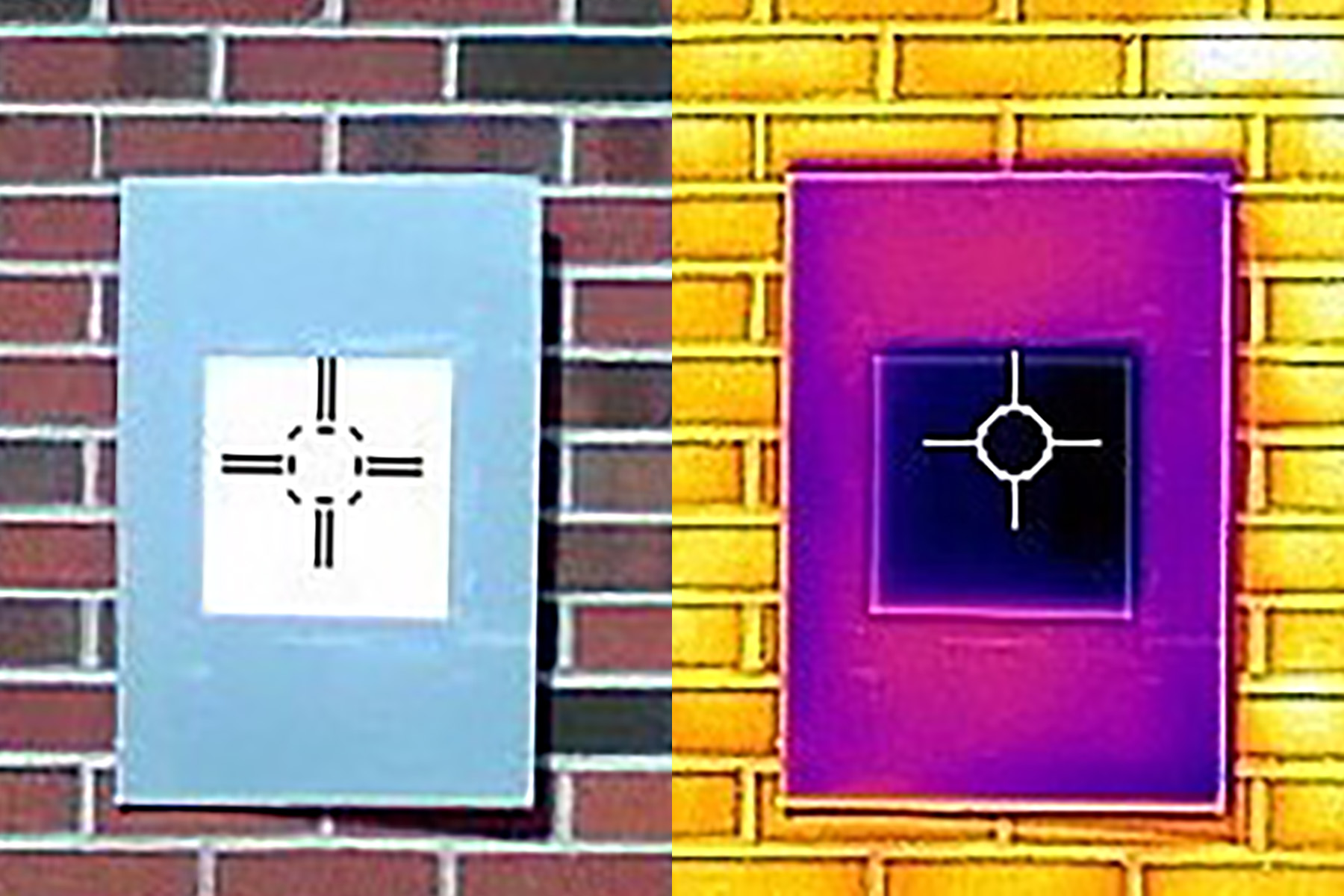
Xiulin Ruan, a Purdue University professor of mechanical engineering, holds up his lab’s sample of the whitest paint on record. Purdue University/Jared Pike
Surely, you’ve heard of Vantablack, the high-tech coating invented by UK company Surrey NanoSystems that absorbs over 99 percent of light and makes three-dimensional objects look like black holes? Aside from its controversially exclusive use by artist Anish Kapoor, the blackest of black paints has so far proven to be most effective in space. “You can imagine up in space people think of it as being really black and dark,” Surrey NanoSystems chief technical officer Ben Jensen explains. “But actually it’s incredibly bright up there because the Sun’s like a huge arc lamp and you’ve got light reflecting off the Earth and moon.”
All that sunlight can make certain parts of the world unbearably hot for humans, a rapidly worsening phenomenon thanks to climate change, which has itself been worsened by climate control systems used to cool homes, offices, stores, etc. Since the 1970s scientists have attempted to break the vicious cycle with white paints that can cool buildings by reflecting sunlight from their surfaces. “Painting buildings white to reflect sunlight and make them cooler is common in Greece and other countries,” notes The Washington Post. “Cities like New and Chicago have programs to paint roofs white to combat urban heat.”
The problem is “commercial white paint gets warmer rather than cooler,” writes Purdue University. “Paints on the market that are designed to reject heat reflect only 80%-90% of sunlight and can’t make surfaces cooler than their surroundings,” since they absorb ultraviolet light. That may well change soon, with the invention by a team of Purdue engineers of an as-yet unnamed, patent-pending ultra-white paint that has “pushed the limits on how white paint can be.” Those limits now fall just slightly short of Vantablack on the other side of the spectrum (or grayscale).

An infrared camera shows how a sample of the whitest white paint (the dark purple square in the middle) actually cools the board below ambient temperature, something that not even commercial “heat rejecting” paints do. Purdue University/Joseph Peoples
Purdue describes the properties of the revolutionary compound.
Two features give the paint its extreme whiteness. One is the paint’s very high concentration of a chemical compound called barium sulfate, which is also used to make photo paper and cosmetics white.
The second feature is that the barium sulfate particles are all different sizes in the paint. How much each particle scatters light depends on its size, so a wider range of particle sizes allows the paint to scatter more of the light spectrum from the sun.
This formula “reflects up to 98.1% of sunlight — compared with the 95.5%,” of light reflected by a previous compound that used calcium carbonate instead of barium sulfite. The less than 3% difference is more significant than it might seem.
Xiulin Ruan, professor of mechanical engineering, describes the potential of the new reflective coating: “If you were to use this paint to cover a roof area of about 1,000 square feet, we estimate that you could get a cooling power of 10 kilowatts. That’s more powerful than the central air conditioners used by most houses… If you look at the energy [savings] and cooling power this paint can provide, it’s really exciting.”
Will there be a proprietary war between major players in the art world to control it? “Ideally,” Kait Sanchez writes at The Verge, “anything that could be used to improve people’s lives while reducing the energy they use should be free and widely available.” Ideally.
Learn more about the whitest white paint here and, if you have access, at the researchers’ publication in the journal ACS Applied Materials & Interfaces.
via Smithsonian
Related Content:
YInMn Blue, the First Shade of Blue Discovered in 200 Years, Is Now Available for Artists
Discover Harvard’s Collection of 2,500 Pigments: Preserving the World’s Rare, Wonderful Colors
Josh Jones is a writer and musician based in Durham, NC. Follow him at @jdmagness
Scientists at Purdue University Create the “Whitest White” Paint Ever Seen: It Reflects 98% of the Sun’s Light is a post from: Open Culture. Follow us on Facebook and Twitter, or get our Daily Email. And don't miss our big collections of Free Online Courses, Free Online Movies, Free eBooks, Free Audio Books, Free Foreign Language Lessons, and MOOCs.
0 Commentaires